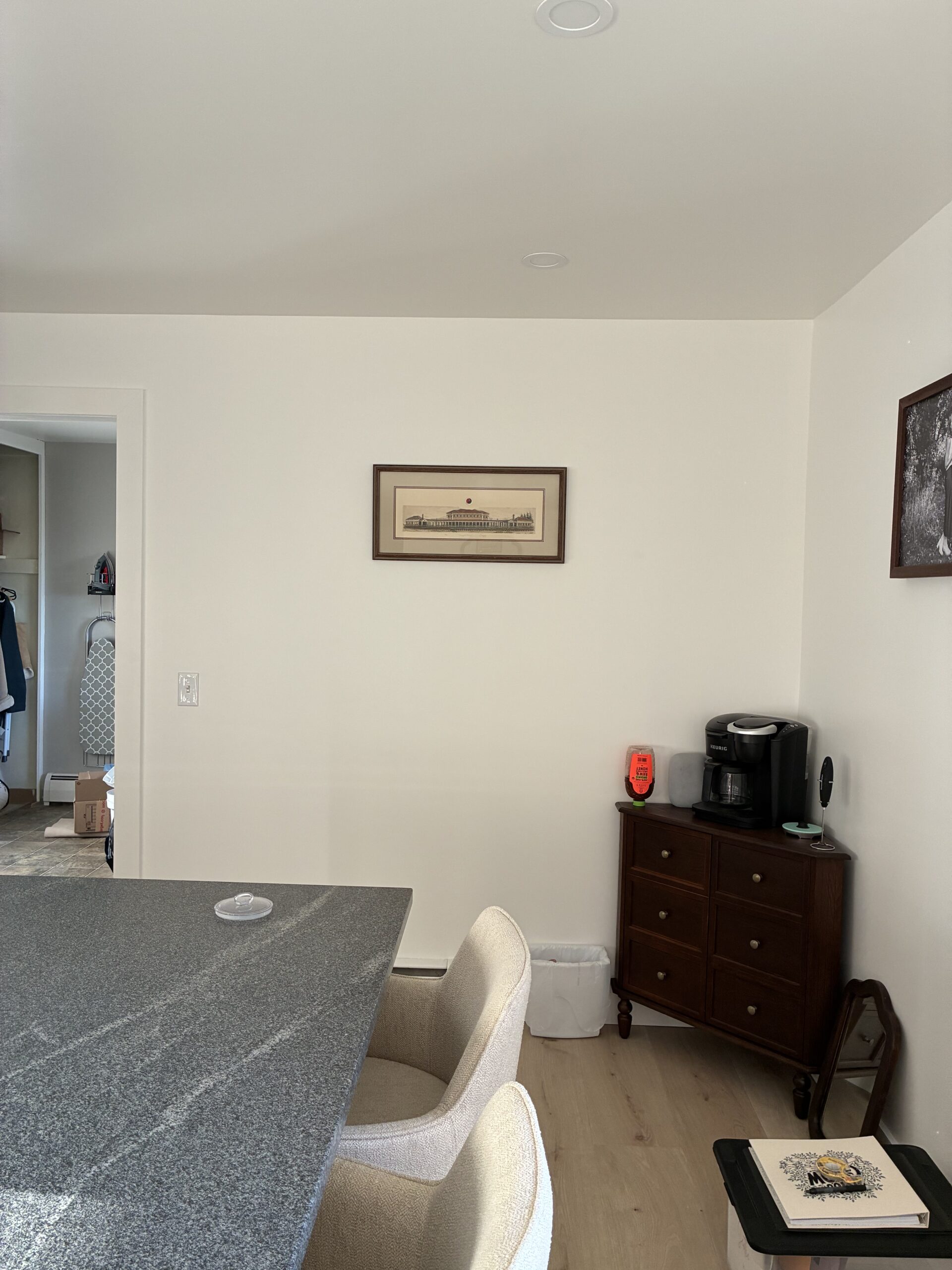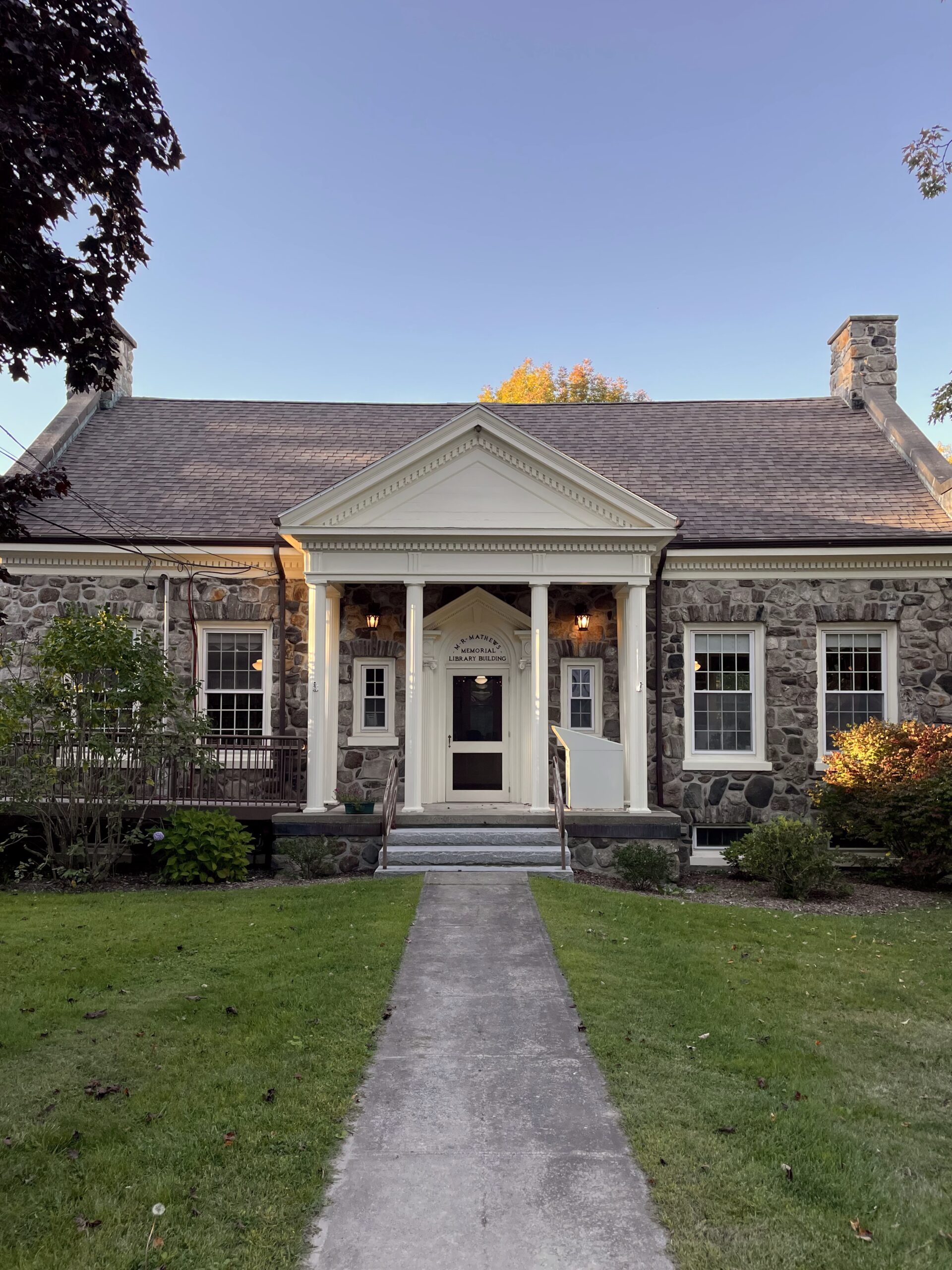Depending on your design method, styling the walls is either the first thing you do or the last. Some people select wallpaper, paint colors, and artwork first to serve as a guide and a reference point for the remaining elements of the room. Others view wall styling as the jewelry of the room – the final missing piece that’s selected after everything else is in place. (More thoughts on this at the bottom of the post.) Regardless of your method, walls can be a tricky surface to style. In today’s Dear Danica article, we’re addressing 3 homes with tricky walls and finding solutions on how to style them.
This post contains affiliate links.

Dear danica,
Hello! I need help with my dining room. I love the texture wallpaper but not the orange. Our woodwork is also very orange with cherry inlets (don’t get me started on how much I hate them). I am stuck with what to do for the walls. Thank you for your help!
– Marcy
You’re welcome to disagree with me, but I actually quite like your wallpaper! I’m assuming it’s grasscloth, which is a very expensive wallpaper. That’s not to say you should keep it simply because it’s expensive, but before we rip it out, it might be worth trying a few workarounds to reduce the intensity of the orange that you dislike so much.
For starters, normally I’m a fan of orange and blue together. It is, after all, a complementary color palette. But in your case, the blue chairs are actually enhancing the orange. For a color palette, I’d recommend choosing more neutral colors with a few small pops of color (still muted though) dispersed throughout the room. Deep olive green chairs, brown accents, and antique brass or bronze (not oil rubbed bronze) lights would complement the wallpaper without emphasizing the orange. Avoid white or cream, as that will accentuate the orange. And as far as wood tones go, a dark mahogany stain or something with a little less red than cherry would be beautiful.
Another way to reduce the orange coloring in the wallpaper is to actually incorporate something (artwork, lighting, etc) that is MORE orange than the walls. For example, say you paint your walls a beautiful muted green color, and then you put a vibrant green sofa against the wall. Suddenly, the green wall will look more brown or gray because the vibrancy of the sofa is now highlighting the *undersaturation* of the walls. It’s reverse psychology in a way, but it’s a great way to trick the eyes into believing that the color is different than what it truly is.
And finally, if you’ve done all this and it’s still too orange for you, you can always cover more of the walls. Currently, with nothing on the walls, the wallpaper is all you see. Hang an extra-large piece of art in the bump-out or build a custom hutch to fill that space entirely. Hang artwork, maybe more than one, under each sconce and tuck some cabinets under them. The more artwork or millwork you incorporate, the less of the orange you’ll see. And maybe, hopefully, it won’t bother you as much!

Dear danica,
I have a free blank wall at the end of our island that I see as a great opportunity to add function and character. The problem is we have a baseboard heat register that we cannot remove at the base of the wall which prevents us from placing a hutch or something on the floor there. My hope is you could help by suggesting various things that can be functional and aesthetic along the wall.
– CJ
As someone who is currently dealing with baseboard heaters on nearly *every* wall of our home, I understand your struggle completely! There are several types of baseboard heaters and some get hotter than others. Ours are hot water baseboard heaters and don’t get very hot to the touch so we’re still able to place furniture near the wall…just not fully against the heater. Trying to embrace that awkward gap between the wall and furniture still! 😆
If it’s safe to do so, I would recommend placing an open base antique desk against the wall with a chair! I think you’ll be surprised how much use it gets! Or perhaps a console table if you don’t have the space for a desk. Then, of course, you can hang artwork above and maybe even some plug-in sconces.
If it’s not safe to put any furniture near the baseboard heaters, what do you think about a custom plate rack? Something large, probably DIY or custom-made, to fill the entire wall. It could be a showstopper! There are so many ways it could be done – made of wood like this, this, or this one, painted the same color as the wall like this, or painted an accent color like this one.
Those would be my recommendations!

Dear danica,
I have a beautiful patterned wallpaper but I am struggling with hanging art. Would it detract from it or make the room feel too busy? Is it weird to just leave blank walls?
– Rachel
You can definitely hang artwork! Look for larger-scale pieces on the simpler side. Detailed paintings, small-scale art, or a collage may look busy. Sharing some artwork examples to follow of rooms with a similar scale wallpaper as yours: example 1, example 2, example 3.
Final Thoughts
At the beginning of this article, I shared the two design methods that many people take when it comes to styling the walls – addressing them either first or last. Is there a correct method? Well, no. Interior design is a creative endeavor, and there is no “correct” way to be creative. There is, however, a benefit to having a consistent method. It creates a rhythm for decisions and allows a home to flow, especially if you are addressing one room at a time.
MY METHOD: When designing a home, I address the walls first – more specifically, the architectural elements. Millwork, moldings, and wall treatments are selected first to set the tone for the rest of the room. Rarely do I choose drywall, because I believe walls should receive more consideration than simply that. With built-ins, casings, and wall treatments in place, I know the style and the level of elegance vs informality that I need for furnishings, paint colors, and soft surfaces. And with furnishings selected, I can then piece together decor and artwork. But it all stems back to the architectural elements.
Do you have a design dilemma you want help with?
Every month I help readers find solutions to their dilemmas, for free!
DO YOU WANT
The Inside Scoop
Where behind the scenes, exclusive advice, and candid conversations are sent straight to your inbox every week.

